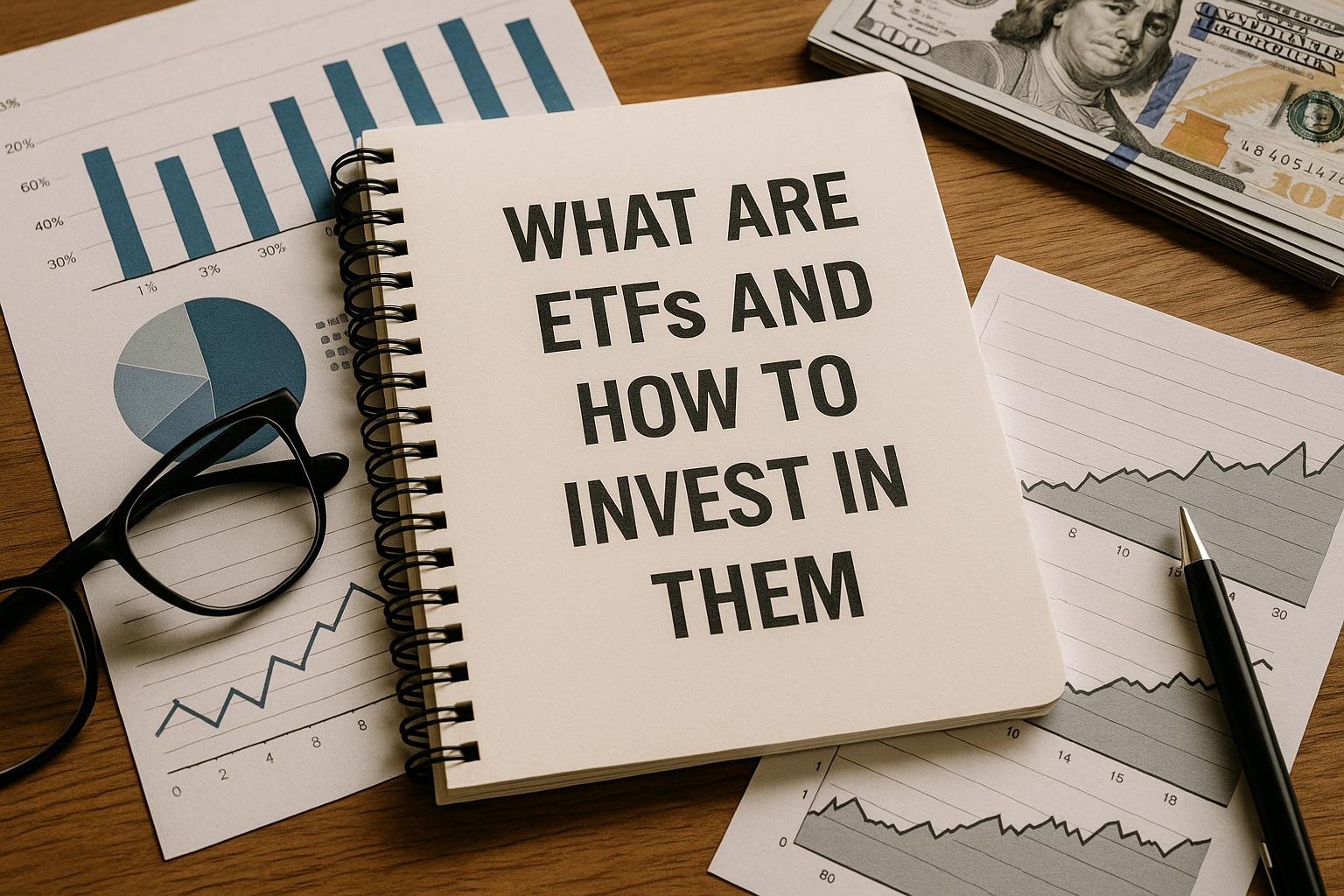Exchange-Traded Funds, or ETFs, have revolutionized the way individuals invest. They offer simplicity, diversification, and low costs, making them an ideal choice for beginners and experienced investors alike. In this article, we’ll explore what ETFs are, how they work, and how you can start investing in them to build wealth over time.
What Is an ETF?
An ETF (Exchange-Traded Fund) is a type of investment fund that holds a collection of assets—such as stocks, bonds, commodities, or real estate—and is traded on stock exchanges just like individual stocks. When you buy an ETF, you’re essentially purchasing a slice of a portfolio that includes various assets.
Key features of ETFs:
- Diversification: One purchase gives you exposure to many securities
- Liquidity: Traded throughout the day, like stocks
- Lower fees: Often have lower expense ratios compared to mutual funds
- Transparency: Many ETFs disclose their holdings daily
ETFs are available across a wide range of asset classes and strategies, from broad market indexes to niche sectors.
How ETFs Work
Each ETF is designed to track a specific index, sector, commodity, or investment strategy. For example, an ETF might follow the S&P 500, giving investors exposure to the 500 largest companies in the U.S.
ETFs trade on exchanges (like NYSE or NASDAQ), so you can buy and sell them during market hours, just like you would with shares of Apple or Microsoft.
Example:
If you buy shares of an ETF that tracks the Nasdaq 100, your investment mirrors the performance of the top 100 non-financial companies listed on the Nasdaq.
Types of ETFs
There are many types of ETFs, each serving a different investment goal. Understanding them helps you choose the right one for your needs.
1. Index ETFs
Track a specific index like the S&P 500 or Dow Jones.
2. Sector and Industry ETFs
Focus on specific sectors like healthcare, technology, energy, or finance.
3. Bond ETFs
Invest in government, municipal, or corporate bonds—good for income and stability.
4. Commodity ETFs
Track prices of commodities like gold, oil, or agricultural products.
5. International ETFs
Provide exposure to markets outside your country.
6. Thematic ETFs
Invest based on a specific theme or trend, like clean energy or robotics.
7. Inverse and Leveraged ETFs
Designed for short-term strategies—carry higher risk and complexity.
Benefits of Investing in ETFs
ETFs offer many advantages that have contributed to their growing popularity.
1. Low Cost
Most ETFs are passively managed, which results in lower expense ratios. This means more of your money is working for you.
2. Diversification
One ETF can give you access to hundreds of different companies or securities, reducing your exposure to risk from a single asset.
3. Accessibility
You can start investing in ETFs with relatively little capital and through any brokerage account.
4. Tax Efficiency
ETFs are structured to minimize capital gains taxes compared to mutual funds.
5. Transparency
You can see what’s inside the ETF and how it’s performing at any time.
Risks of ETFs
Despite their benefits, ETFs are not risk-free. Understanding potential downsides helps you make better decisions.
- Market Risk: If the market or the sector the ETF tracks drops, your investment can lose value.
- Liquidity Risk: Some ETFs, especially niche ones, may not have enough buyers or sellers.
- Tracking Error: Occasionally, an ETF might not perfectly follow the index it’s supposed to mirror.
- Overexposure: Owning too many ETFs with overlapping holdings can reduce diversification.
How to Start Investing in ETFs
Here’s a step-by-step guide to help you begin your ETF investing journey:
1. Open a Brokerage Account
You’ll need a brokerage account to buy and sell ETFs. Many online brokers offer commission-free trades on ETFs.
2. Define Your Goals and Risk Tolerance
Are you investing for retirement? Looking for passive income? Understanding your goal helps you choose the right ETF.
3. Research ETF Options
Look into:
- Expense ratio (fees)
- Performance history
- Holdings and sectors
- Dividend yield (if income is a goal)
- Volume and liquidity
Use tools like Morningstar, Yahoo Finance, or your broker’s platform.
4. Choose and Buy
Decide how much you want to invest and execute the purchase. You can buy as little as one share or use fractional shares (if your broker offers them).
5. Monitor and Rebalance
Review your ETF investments periodically. Adjust if your strategy or financial goals change.
Best ETFs for Beginners (Examples)
Note: This is for educational purposes only. Always do your own research.
- VOO (Vanguard S&P 500 ETF): Tracks the S&P 500; low cost and high performance.
- IVV (iShares Core S&P 500 ETF): Similar to VOO, great for long-term investing.
- QQQ (Invesco QQQ Trust): Tracks the Nasdaq-100; includes tech giants.
- VTI (Vanguard Total Stock Market ETF): Exposure to the entire U.S. stock market.
- AGG (iShares Core U.S. Aggregate Bond ETF): Good for those looking for fixed income.
Final Thought: ETFs as a Foundation for Long-Term Wealth
ETFs are one of the most powerful tools available to modern investors. They offer simplicity, diversification, and accessibility — qualities that can support both short- and long-term financial goals. Whether you’re building your first portfolio or adding diversity to a larger strategy, ETFs provide a low-stress way to grow your wealth.
Start small, stay informed, and be consistent. Over time, the power of compounded returns and smart diversification can lead you toward the financial future you envision.

